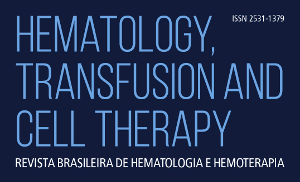Resumo em Inglês:
ABSTRACT Background: Chikungunya virus, an arbovirus that belongs to the Alphavirus genus of the Togaviridae family, causes a febrile illness accompanied by rash and arthralgia. It is estimated that during outbreaks, the prevalence of Chikungunya virus RNA in viremic blood donations varies between 0.4 and 2.1%; therefore, this virus may be transmitted by transfusion. In Brazil, Chikungunya virus has been claimed to cause extensive outbreaks, however, the seroprevalence of anti-Chikungunya virus IgG among Brazilian blood donors is unknown. Methods: Eight hundred and ninety-seven blood samples were collected from volunteer blood donors in two distant localities long after the Chikungunya virus first appeared in Brazil. In 2015, 442 samples were collected from the Hemotherapy Service of Macapá, Amapá in the northern Brazilian Amazon. To evaluate the dissemination course of the virus in Brazil, in 2016, 455 blood samples were collected from the southeastern region (Blood Center of Ribeirão Preto, Ribeirão Preto, São Paulo). All samples were tested for the presence of anti-Chikungunya virus IgG and viral RNA. Results: One sample (0.2%) obtained from the Hemotherapy Center of Macapá tested positive for anti-Chikungunya virus IgG and no sample from the Blood Center of Ribeirão Preto was seroreactive to anti-Chikungunya virus IgG. All blood donations were Chikungunya virus RNA negative. Conclusions: This study, performed during 2015-2016, indicates that the transfusion risk of Chikungunya virus in this period was low. However, due to the constant advance of this virus in Brazil, further studies during outbreaks are needed to evaluate the presence of Chikungunya virus RNA in blood donations and the respective transfusion-transmission risk.
